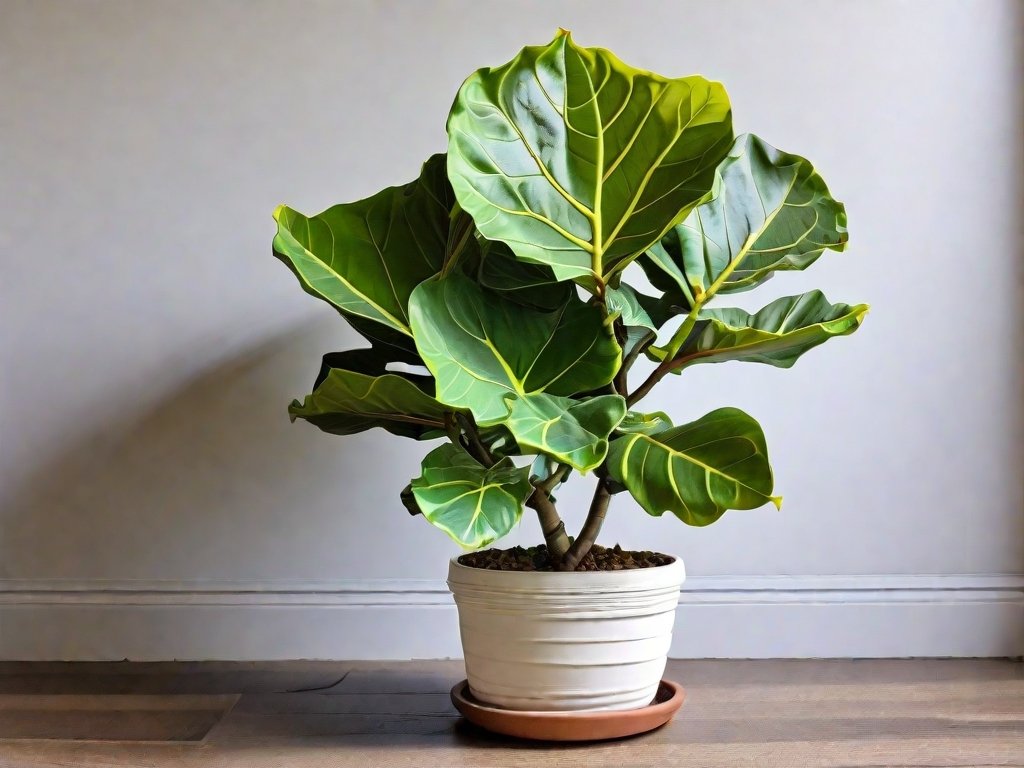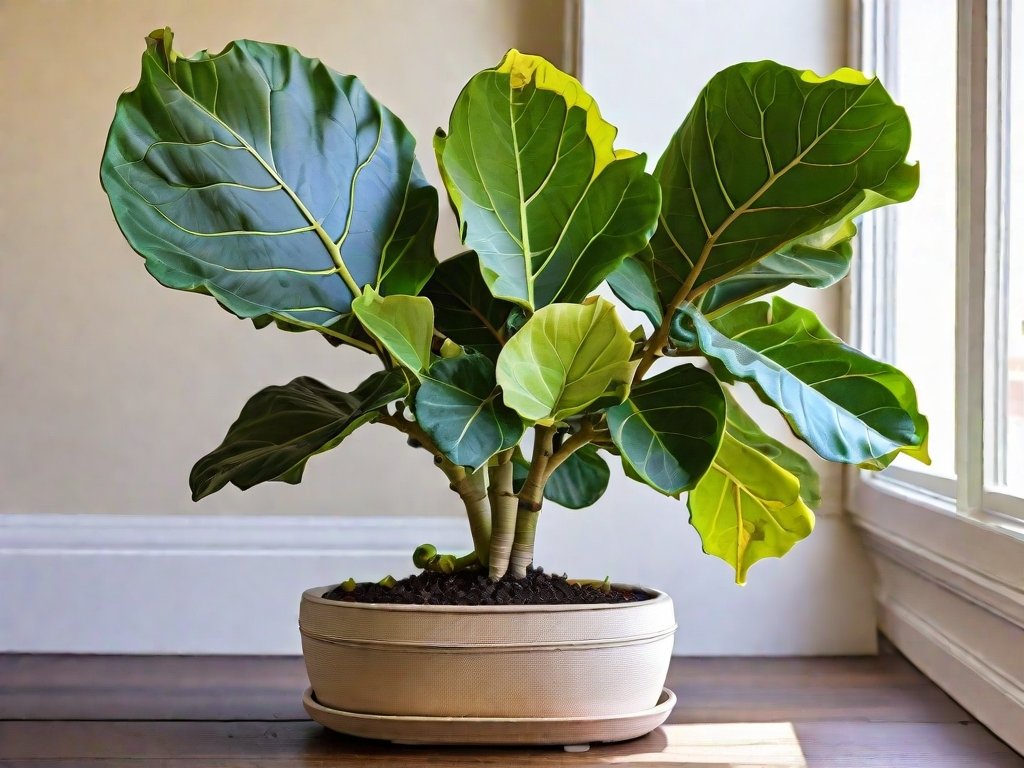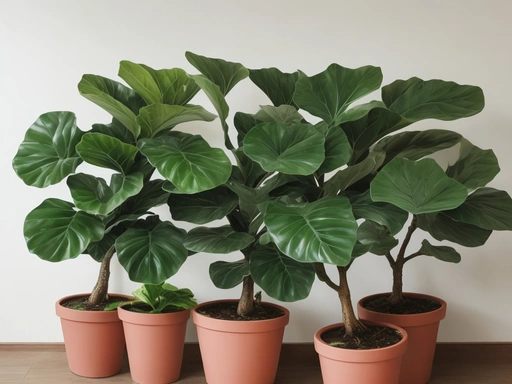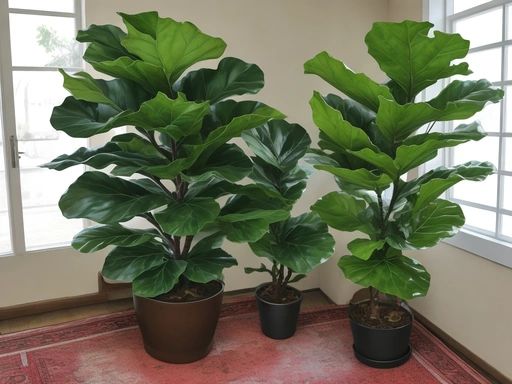Common Fiddle-Leaf Fig Problems And Solutions: Troubleshooting Tips!
Key Takeaways:
- Overwatering is one of the most common problems with fiddle-leaf figs; allow the soil to dry out between waterings.
- Lack of sunlight can lead to droopy leaves and slow growth; place your fiddle-leaf fig in a bright, indirect light location.
- Fiddle-leaf figs are prone to pests such as spider mites and mealybugs; regularly inspect your plant and use appropriate pest control methods.
- Proper pruning is essential for maintaining a healthy and attractive fiddle-leaf fig; remove dead or damaged leaves and shape the tree as desired.
Are your fiddle-leaf fig plants not looking as lush and vibrant as they used to be? Don’t worry, you’re not alone.
Fiddle-leaf figs can be notoriously temperamental and prone to a variety of common problems.
From yellowing or brown spots on the leaves to drooping or wilting foliage, these issues can be frustrating for plant enthusiasts. But fear not! In this blog, I’ll be sharing my expertise and providing solutions to help you revive your fiddle-leaf fig back to its former glory.
So, let’s dive in and tackle those fiddle-leaf fig problems head-on!
| Problem | Solution |
|---|---|
| Yellowing leaves | -Check for overwatering and adjust watering schedule -Ensure proper drainage in the pot -Move the plant to a location with appropriate light levels |
| Brown spots on leaves | -Address possible pest infestation -Adjust watering schedule -Keep the plant away from direct sunlight |
| Leaf drop | -Check for overwatering or underwatering -Keep the plant in a stable environment without sudden temperature changes -Inspect for pests |
| Wilting leaves | -Water the plant thoroughly and ensure proper drainage -Keep the plant in a location with suitable humidity levels -Check for root rot or root-bound conditions |
| Stunted growth | -Ensure the plant is receiving adequate sunlight -Adjust fertilization routine -Inspect for pests or root issues |
Common Problems with Fiddle-leaf Fig Plants
Common Problems with Fiddle-leaf Fig Plants: Troubleshoot issues like yellowing/brown spots, drooping/wilting leaves, leaf drop/shedding, root rot/overwatering, and pests/diseases affecting your fiddle-leaf fig.
Yellowing or Brown Spots on Fiddle-leaf Fig Leaves
Yellowing or brown spots on fiddle-leaf fig leaves can be a sign of various issues. It could indicate overwatering, underwatering, too much direct sunlight, or even pests.
To address this problem, assess your watering routine, ensure proper light levels, and inspect for pests.
Adjustments in these areas should help your fiddle-leaf fig regain its healthy, vibrant leaves.

Drooping or Wilting Fiddle-leaf Fig Leaves
Drooping or wilting fiddle-leaf fig leaves can be a sign of underwatering, overwatering, or inconsistent watering.
Other factors such as excessive heat, low humidity, or sudden temperature changes can also cause this issue.
To fix it, make sure you water your plant regularly, but avoid overwatering.
Keep an eye on the moisture levels and adjust accordingly.
Creating a stable environment with moderate temperature and humidity can also help prevent leaf drooping.
Leaf Drop or Shedding in Fiddle-leaf Fig Plants
Leaf drop or shedding in fiddle-leaf fig plants can be quite common, but it’s important to understand the causes and how to address them.
- Overwatering: Avoid giving your plant too much water, as this can lead to root rot and ultimately, leaf drop. Make sure the soil is slightly dry before watering again.
- Insufficient light: Fiddle-leaf figs need bright, indirect light to thrive. If your plant is in a dark or low-light area, it may shed leaves. Move it to a brighter spot, but avoid direct sunlight.
- Temperature fluctuations: Fiddle-leaf figs prefer consistent temperatures between 60-75°F (15-24°C. Extreme temperature changes or drafts can cause leaf drop. Keep your plant away from cold drafts and heating vents.
- Nutritional deficiencies: If your fiddle-leaf fig is lacking essential nutrients, it may shed leaves. Use a balanced fertilizer during the growing season to ensure your plant gets the necessary nutrients.
Remember, a few dropped leaves are normal, but if your fiddle-leaf fig is losing a significant amount or showing other signs of distress, it’s important to identify and address the underlying issue.
Regular care and attention will help keep your plant healthy and thriving.
Root Rot and Overwatering in Fiddle-leaf Fig Plants
Root rot is a common issue in fiddle-leaf fig plants caused by overwatering.
It occurs when the roots are constantly damp or sitting in water, leading to fungal growth and root decay.
Signs of root rot include yellowing leaves, wilting, and a foul odor.
To prevent and treat root rot, ensure proper drainage, allow the soil to dry between waterings, and avoid overwatering.
Pests and Diseases Affecting Fiddle-leaf Fig Plants
Fiddle-leaf fig plants can be affected by pests and diseases, such as spider mites, mealybugs, and scale insects.
These pests can cause damage to the leaves, leading to discoloration, drooping, and even leaf loss.
Common diseases include fungal infections like root rot and leaf spot.
Regularly inspect your plants, treat pests immediately, maintain proper watering and humidity levels, and avoid overwatering to prevent these issues.
Solutions for Common Fiddle-leaf Fig Problems
Got some common problems with your Fiddle-leaf Fig? Here are some solutions for you!
Adjusting Light and Temperature for Fiddle-leaf Fig Plants
To ensure the optimal growth of your fiddle-leaf fig plant, it’s important to provide the right light and temperature conditions.
Give your plant bright, indirect light by placing it near a window or using artificial grow lights.
Avoid direct sunlight, as it can burn the leaves.
In terms of temperature, aim for a range of 65-75°F (18-24°C).
Avoid drastic temperature fluctuations or exposing the plant to drafts.
Keep these factors in mind to help your fiddle-leaf fig thrive!

Proper Watering Techniques for Fiddle-leaf Fig Plants
Proper watering techniques for fiddle-leaf fig plants are essential for their health.
Water them when the top inch of soil is dry, but avoid overwatering, as this can cause root rot.
Use room temperature water and make sure the pot has drainage holes.
Water thoroughly and allow excess water to drain out.
It’s important to find the right balance!
Dealing with Root Rot and Overwatering
To deal with root rot and overwatering in your fiddle-leaf fig plant, you’ll need to take a few steps. First, make sure your plant is in a well-draining pot and use a well-draining soil mix.
Avoid overwatering by allowing the top few inches of soil to dry out before watering again.
If you notice signs of root rot, such as yellowing or wilting leaves and a foul smell coming from the soil, you’ll need to remove the affected parts of the plant and repot it in fresh, dry soil. Remember, fiddle-leaf figs prefer slightly drier conditions, so it’s better to underwater than overwater.

Preventing and Managing Pests and Diseases
Prevent pests and diseases in your fiddle-leaf fig by keeping the plant in optimal conditions, avoiding overwatering, and ensuring good airflow. A few common pests to watch out for are spider mites and mealybugs.
If you do encounter pests, there are natural and chemical options available for treatment.
Regularly inspecting your plant can help catch any problems early on.
Frequently Asked Questions about Fiddle-leaf Fig Plants
How often should I water my Fiddle-leaf Fig plant?
For watering your fiddle-leaf fig plant, aim to keep the soil evenly moist, but not soggy.
Water every 1-2 weeks, allowing the top inch of soil to dry out between waterings.
Use your finger to test the moisture level, and adjust accordingly.
Remember, overwatering can cause root rot, so don’t overdo it!

What are some signs of overwatering in a Fiddle-leaf Fig?
Some signs of overwatering in a Fiddle-leaf Fig include yellowing or brown spots on the leaves, drooping or wilting leaves, and leaf drop or shedding. The soil may also feel consistently wet or soggy, and there may be a musty or rotten smell coming from the pot.
How do I prevent and control pests on my Fiddle-leaf Fig?
To prevent and control pests on your Fiddle-leaf Fig, follow these steps:
- Keep a close eye on your plant for any signs of pests, such as tiny insects or webs.
- Regularly inspect the leaves, stems, and soil for any infestations.
- If you spot pests, gently wipe them off with a damp cloth or use a mild soap and water solution to clean the affected areas.
- Consider using natural pest control methods, such as neem oil or insecticidal soap, to treat the infestation.
- Quarantine any affected plants to prevent the pests from spreading to other plants.
- Improve air circulation around your Fiddle-leaf Fig by placing it in a well-ventilated area.
- Avoid overwatering your plant, as pests are attracted to moisture.
- Lastly, maintaining a clean and healthy environment for your Fiddle-leaf Fig will help prevent future pest infestations.
Can I propagate my Fiddle-leaf Fig plant?
propagate your Fiddle-leaf Fig planteaf Fig plant! Propagation is a great way to create new plants from your existing one. You can propagate your Fiddle-leaf Fig through stem cuttings.
Simply take a healthy section of stem, remove any leaves from the bottom, and place it in a jar of water or a well-draining soil mix.
Keep it in a warm and bright location, and within a few weeks, you should see roots starting to form. Once the roots are established, you can transfer your new plant into a pot with fresh soil.
Final Verdict
Understanding and addressing common problems that can arise with fiddle-leaf fig plants is essential for their health and longevity.
From yellowing or brown spots on leaves to drooping or wilting, leaf drop, root rot, and pest infestations, there are various challenges that may arise.
However, with proper care, these issues can be managed effectively.
By adjusting light and temperature, practicing proper watering techniques, addressing root rot, and implementing preventive measures against pests and diseases, fiddle-leaf fig plants can thrive.
Remember to water responsibly, provide adequate light and temperature conditions, and regularly monitor your plant for any signs of distress.
With patience and attention, your fiddle-leaf fig will flourish and become a beautiful focal point in your living space.







